Buddha Park
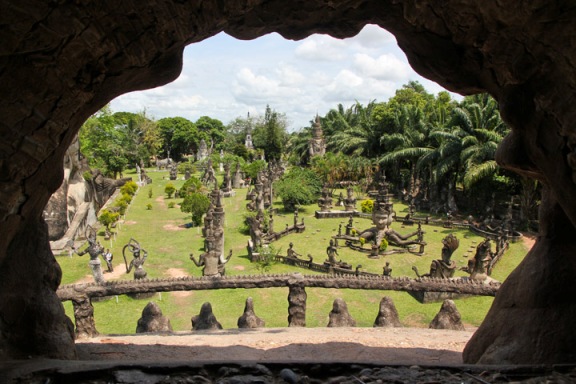
Buddha Park, a concrete testament to the obsession of Luang Pu, a shamanist priest who conceived and started building the park in the 1950s, is a fanciful sculpture garden full of Hindu and Buddhist statues. The statues are captivating, whether they are snarling, reposing, saving maidens in distress or carrying them to their doom. The huge reclining Buddha is outstanding; you can climb on its arm for a photo. There is also a large pumpkin-esque dome to climb, itself filled with sculptures. The dusty and bumpy bus ride here provides clear views of Thailand across the Mekong.
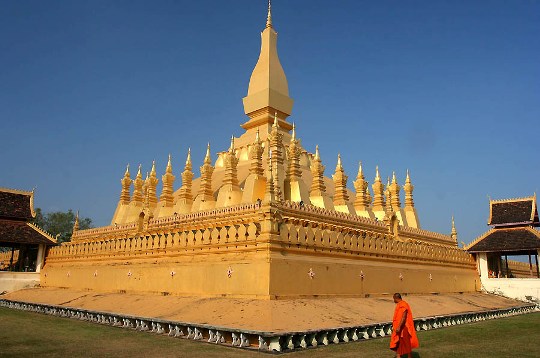
Phra That Luang is the preeminent stupa in Lao, a national symbol that's an imposing 44m high. The original, built in 1566 by King Setthathirat over the ruins of a 12th-century Khmer temple, was destroyed when the Siamese sacked Vientiane in 1828. It was rebuilt by the French in 1900 but was torn down in 1930 and remodeled to become what you see today. As you approach, the statue in front depicts Setthathirat. After you enter the first courtyard, look to the left to see a sacred Bodhi tree, the same variety Buddha sat under to achieve enlightenment. It has a tall, slim trunk, and the shape of its foliage is almost perfectly round. According to the Laotians, Bodhi trees appear only in sacred places; legend has it that the site originally housed a stupa containing a piece of the Buddha's breastbone. The stupa is built in stages. On the second level, there are 30 small stupas, representing the 30 Buddhist perfections, or stages to enlightenment. That Luang is the site of one ofLaos's most important temple festivals, which takes place in early November.
Ho Phra Keo
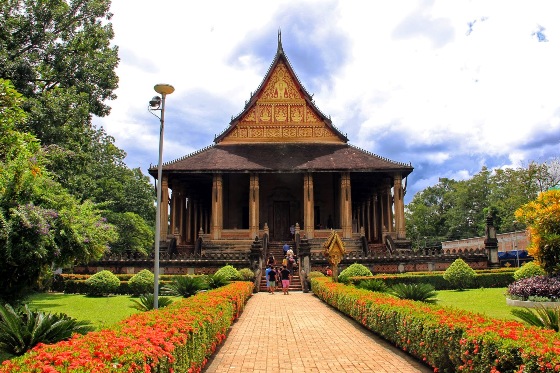
Built by King Setthathirat in 1565, Phra Keo was constructed to house an emerald Buddha that the king took from Thailand (which the Thais took back in 1779). Today there are no monks in residence, and it is actually a museum of religious art, including a Khmer stone Buddha and a wooden copy of the famous Luang Prabang Buddha. In the garden, there's a transplanted jar from the Plain of Jars.
Wat Si Muang Another 1566 Setthathirat creation, this wat houses the foundation pillar of the city. According to legend, a pregnant woman named Nang Si, inspired by the gods to sacrifice herself, jumped into the pit right before the stone was lowered. She has now become a sort of patron saint for the city. The temple is very popular as a result and is the site of a colorful procession 2 days before the That Luang festival every November.
Wat Si Saket Completed in 1818, Wat Si Saket was the only temple in Vientiane to survive the pillaging of the city by the Siamese in 1828, perhaps because the temple was built in traditional Thai style. It is renowned for the more than 10,000 Buddha images, of all shapes and sizes, in every possible nook and cranny. Look for Buddha characteristics that are unique toLaos: the standing or ‘praying for rain’ Buddha; or the pose with arms up and palms facing forward, the "stop fighting" or ‘calling for peace’ Buddha. The pose in which Buddha points the right hand downward signifies a rejection of evil and a calling to mother earth for wisdom and assistance. Lao Buddhas also have exaggerated nipples and square noses, to emphasize that Buddha is no longer human.
Wat Ong Teu is in a particularly auspicious location, surrounded by four temples: Wat Inpeng to the north, Wat Mixay to the south, Wat Haysok to the east, and Wat Chan to the west. Its name comes from its most famous inhabitant, a huge (ongteu) bronze Buddha. The temple, famous for its beautifully carved wooden facade, was built in the early 16th century and rebuilt in the 19th and 20th centuries. Home to the Patriarch of Lao Buddhism, the temple also serves as a national center for Buddhist studies.
Lao National Musuem
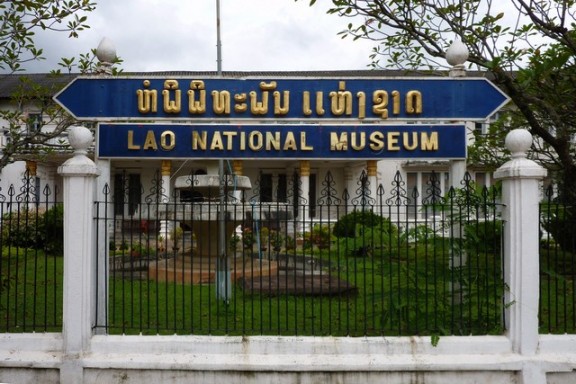
Housed in an interesting old colonial structure that was once used for government offices, the Museum of the Revolution has photos, artifacts, and re-creations of the Lao struggle for independence against the French and Americans. The exhibits are rather scanty, barely scratching the surface of such a complicated subject, but most are in English. Archaeological findings and maps presented on the first floor help make a visit here worthwhile. One of the most interesting exhibits is in the last room before you exit, sort of a Laos trade and commodities exhibit of produce, handiwork, and manufactured goods. Though dated, it will give you some idea of Laos's geography and commerce.
Patuxay
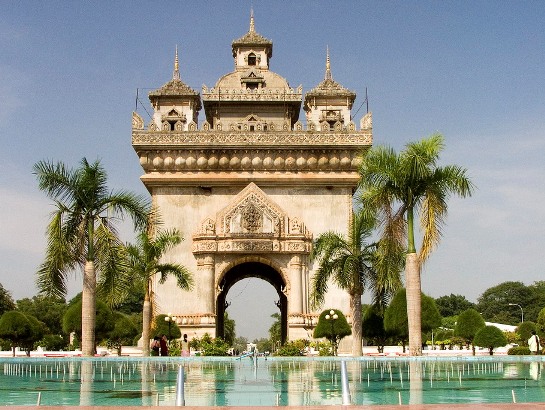
Completed in 1968 and dedicated to those who fought in the war of independence against the French, the monument is an arch modeled on the Parisian Arc de Triomphe. Its detailing is typically Lao, however, with many kinnari figures (half woman, half bird). It's an imposing sight, and you can climb up for a good city view. Once on top, numerous signs forbid the use of cameras, but no one seems to take heed. This is the town's main teenage strutting ground and is crowded on weekends.
Morning Market is the hub of local commerce and really where the action is. Here you can find anything from the Thai version of a Britney Spears CD to a Buddhist keepsake from one of the tourist shops or trinket salesmen. Great deals can be found on Lao silks if you bargain hard. This is the Laos version of mall culture, and sometimes the everyday tool department or stationery area gives a special glimpse into daily life. Enjoy a good wander and hassle-free shopping. There are few touts, but, as always in crowded places, beware of your valuables.
That Dam (Black Stupa)
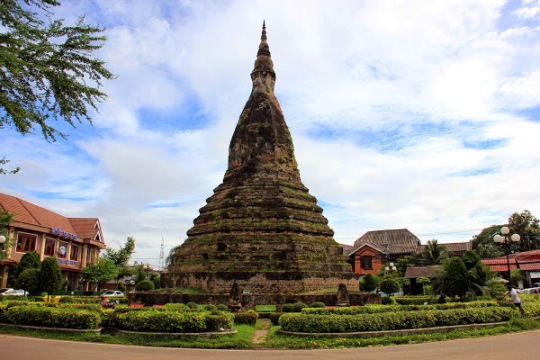
This ancient stupa was probably constructed in the 15th century or even earlier, though it has never been dated. It is rumored to be the resting place of a mighty seven-headed naga, or dragon that protected the local residents during the Thai invasion in the early 1800s.
- Gaze up at the tapered golden stupa of Pha That Luang which is the symbol of Lao nationhood in Vientiane.
- Check out the concrete folly that is Xieng Khuan, the bizarre park full of dozens of giant Buddhist and Hindu scultures, 20km from Vientiane.
- Treat yourself to a traditional herbal sauna and massage at Vientiane’s Wat Sok Pa Luang.
- Trek to waterfalls, waeve baskets or spy on wild elephants at Phu Khao Khuay National Protected Area.
- Tube, climb, raft, kayak, cycle or walk through the rivers and imposing karst terrain around Vang Vieng.